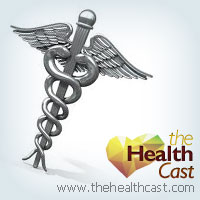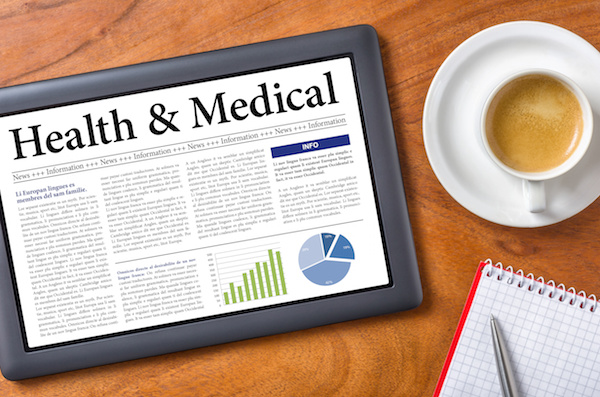
Here are some of the latest health and medical news developments, compiled by the editors of HealthDay:
Americans Need Some Enlightening on Mental Illness: CDC
Most Americans (89 percent) believe that treatment can help the mentally ill to lead normal lives, but many fewer (57 percent) think the public is caring and sympathetic to those needing psychiatric assistance, a new government survey finds.
The findings vary from state to state and suggest a need for public education programs aimed at reducing the stigma surrounding mental illness, according to the May 28 Morbidity and Mortality Weekly Report from the U.S. Centers for Disease Control and Prevention. Negative stereotypes often keep people from seeking treatment, the authors said.
The CDC studied responses to surveys conducted in 35 states, the District of Columbia and Puerto Rico. Those most likely to strongly agree that treatment is effective lived in the District of Columbia (74 percent), Louisiana (72 percent) and Oregon (71.7 percent). Only a quarter of Puerto Ricans (25.7 percent) agreed with the statement.
The largest percentage of those who strongly agreed that people feel empathy toward the mentally ill lived in Louisiana (32.7 percent), Hawaii (29.7 percent) and Mississippi (28 percent). The least likely to agree lived in Puerto Rico (7.2 percent).
“Geographic variability in attitudes toward mental illness and its causes should be a topic of further study,” the authors wrote.
—–
AAP Retracts Support for ‘Ritual Nick’ of Girls’ Genitalia
The American Academy of Pediatrics (AAP) has retracted a recent policy statement endorsing a “ritual nick” of girls’ genitalia in place of more extensive cutting, and instead issued a statement condemning all forms of female genital mutilation.
“The AAP reaffirms its strong opposition to FGC [female genital cutting] and counsels its members not to perform such procedures,” its board of directors said in a statement Thursday. “As typically practiced, FGC can be life-threatening. Little girls who escape death are still vulnerable to sterility, infection, and psychological trauma.
“The AAP does not endorse the practice of offering a ‘clitoral nick.’ This minimal pinprick is forbidden under federal law and the AAP does not recommend it to its members,” the statement added.
Dr. Judith S. Palfrey, AAP president, said the organization opposes “all forms of female genital cutting, both here in the U.S. and anywhere else in the world.”
Referring to criticism of the AAP’s April statement, she said one good thing has come from the controversy: This has “raised the world’s awareness about this harm to young women,” she said.
—–
Weight Loss in Childhood Cuts Women’s Odds for Adult Diabetes
A 16-year study involving almost 110,000 women finds that overweight girls who shed the excess pounds greatly cut their odds for type 2 diabetes as adults.
The study, funded by the U.S. National Institutes of Health, tracked the health of women enrolled in the ongoing Nurses Health Study from 1989 to 2005. The nurses were asked to describe their body shape at ages 5, 10 and 20 and also provide their weight at age 18, along with their current height and weight.
According to the researchers, women who were overweight as girls were much more likely to develop type 2 diabetes as adults. For example, women who were a size 6 at age 10 were almost three times more likely to be diabetic as adults, and those who were obese at age 18 (a body-mass index of 30 or over) had an almost ninefold greater risk of developing the illness in adulthood, compared to 18-year-olds of normal weight.
But the study, published in the June issue of Diabetes Care, also found that losing weight during childhood greatly cut the odds. While females who were overweight at ages 5, 10 and 20 were 15 times more likely to become diabetic as adults compared to normal-weight girls, those who were overweight at age 10 but not overweight as adults were no more likely to develop the illness.
“These findings suggest that ensuring that overweight kids reverse their weight gain is critical to limiting their future risk of diabetes as adults,” study author Edwina Yeung, of the National Institute of Child Health and Human Development division of epidemiology, statistics and prevention research, said in an institute news release.
—–
Experimental Drug Boosts Cure Rate for Hepatitis C
A new drug under development for hepatitis C greatly improved the cure rate for patients while cutting the time needed for treatment, according to the drug’s maker, Vertex Pharmaceuticals.
As reported by The New York Times, about 75 percent of patients enrolled in the trial who took the drug, telaprevir, along with standard treatment, essentially rid themselves of the virus, which can lead to liver damage and even cancer. In comparison, just 44 percent of patients who took the standard therapy alone had the same results.
Telaprevir works by blocking a protease, an enzyme manufactured by the virus, similar to how powerful HIV medications attack that pathogen.
Typical treatments aimed at ridding the body of hepatitis C typically take up to a year, and many patients drop out before that time. However, in the Vertex trial, about 70 percent of the almost 1,100 patients enrolled were able to achieve that goal within six months, the company reported.
“If you can promise them six months with a reasonable chance of a cure, that’s a meaningful advance,” Dr. Scott L. Friedman, chief of the division of liver diseases at the Mount Sinai School of Medicine in New York City, told the Times.

